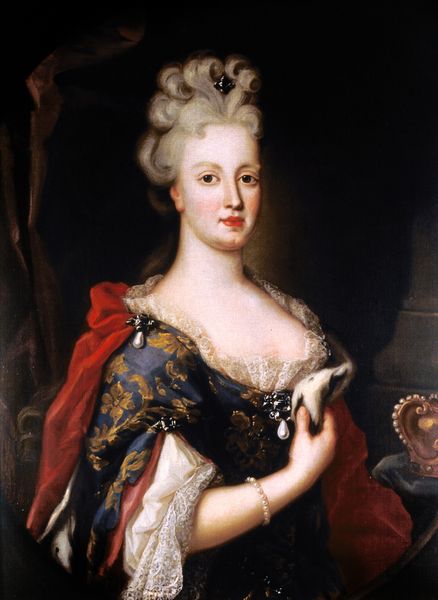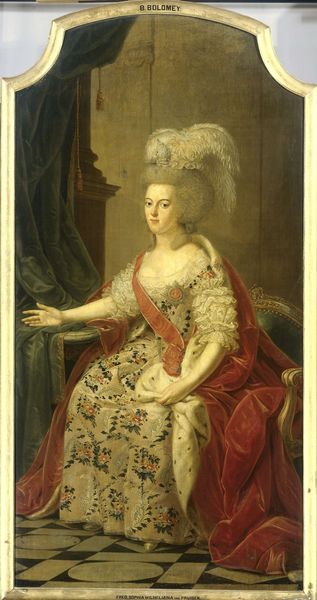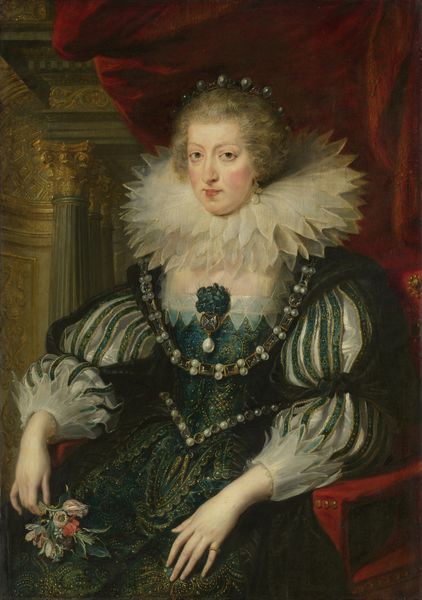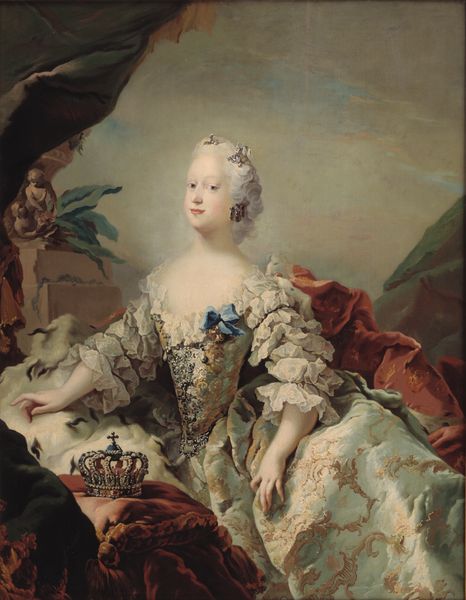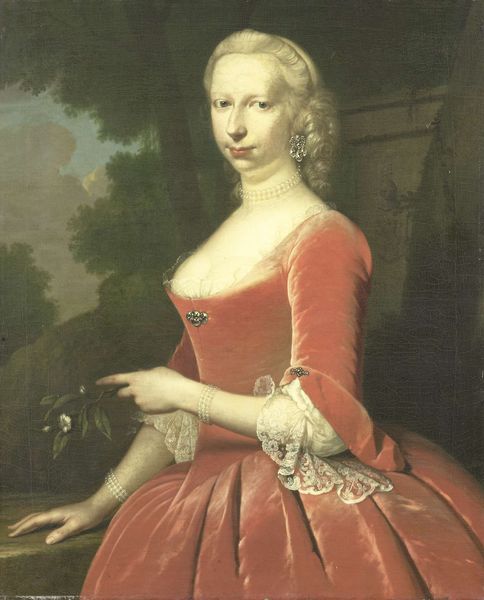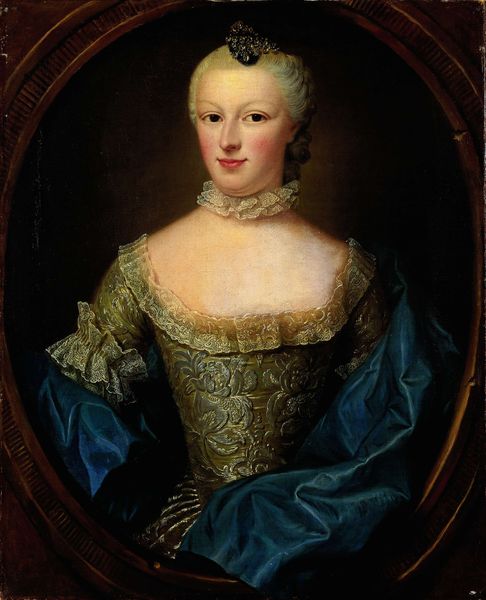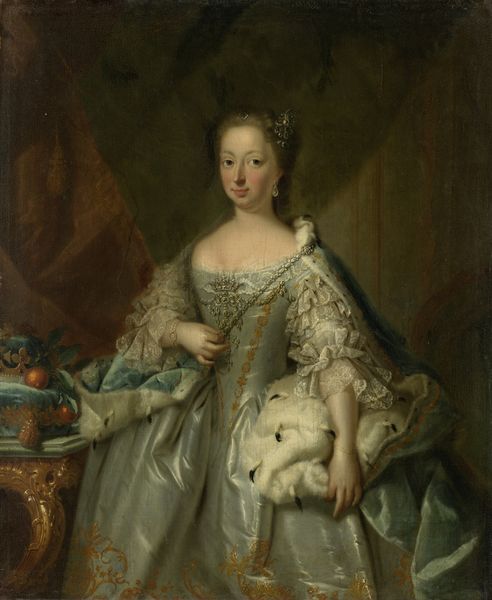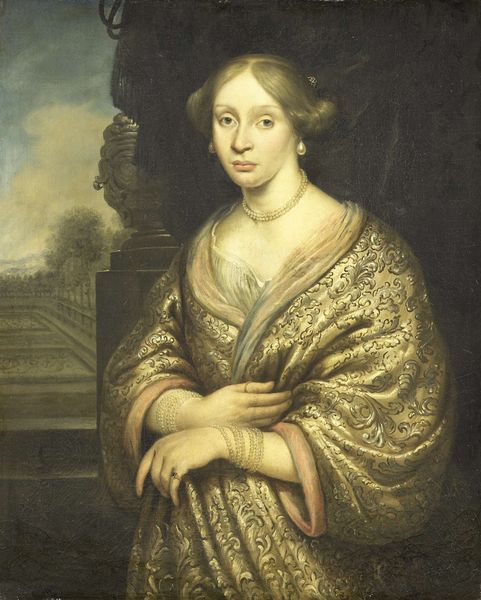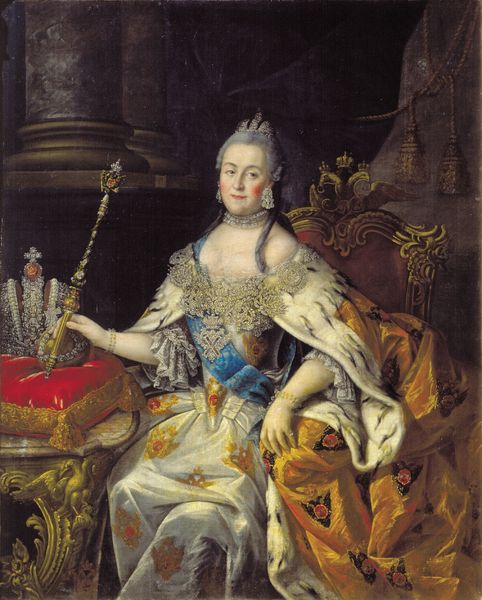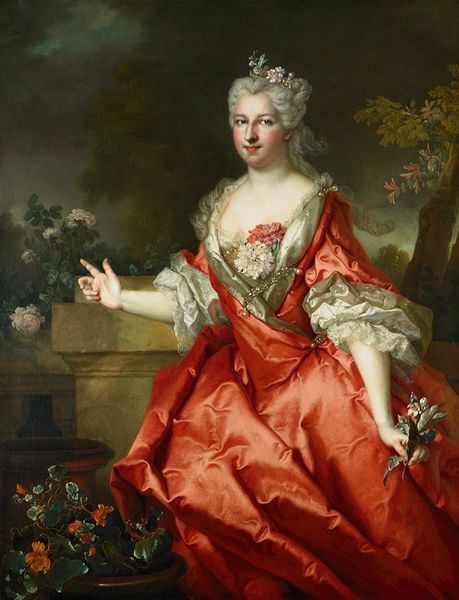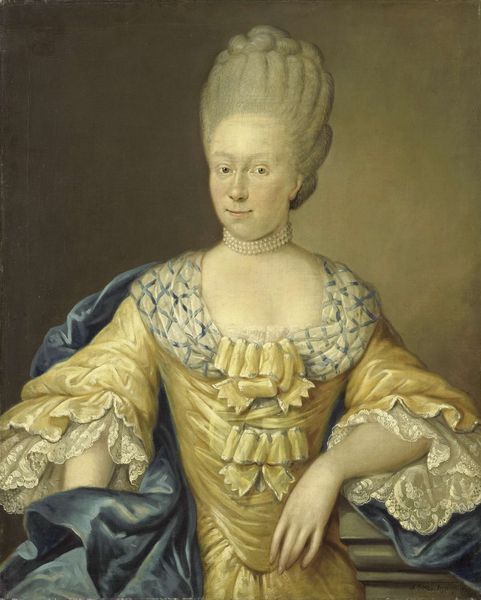
painting, oil-paint
#
portrait
#
painting
#
oil-paint
#
rococo
Copyright: Public domain
Curator: Antoine Pesne painted this portrait of Johanna Holstein Gottorp in 1746. It is an oil painting currently held in the Hermitage Museum in Saint Petersburg. Editor: The colors are remarkably soft, almost pastel. There's a luminous quality to the fabrics, especially the contrast between the rich red velvet and the cool blue of her dress. It strikes me as quite serene. Curator: The serenity likely comes from Johanna's perceived role in the complex web of 18th-century European dynastic politics. She navigated court life with considerable skill during a time when the future of Europe’s monarchies was far from secure. This image really exemplifies the performance expected of noble women in that era. Editor: Performance is key. Notice how Pesne uses light to highlight the textures—the delicate lace, the sheen of the silk. It’s not just about documenting her features but showcasing wealth and status. There's almost a sculptural quality to the way he renders the folds of the fabric. Curator: Absolutely. This work fits squarely within the Rococo style. It’s important to understand Rococo as a visual expression of aristocratic power, especially for women. They served as patronesses, promoters of culture, and wielded soft power within very rigid patriarchal structures. Editor: I find it interesting that, despite the opulence, her expression is rather subdued. It's an interesting contrast with the ostentatious display. Curator: Consider it a mark of "appropriate" feminine behavior for the period—an emblem of controlled emotions despite the burdens she would have carried as a woman of royal standing. Remember that arranged marriages were critical for political alliance, so personal choices were, in effect, erased in exchange for expected conduct. Editor: So, in a way, the artwork presents her more as an object than a subject. Even as it purports to immortalize her, it arguably traps her within the confines of prescribed roles. Curator: Yes, and interrogating this work forces us to confront the historical constraints on women, while celebrating those individuals like Johanna, who were, nonetheless, incredibly capable navigators in their own time. Editor: The painting is undoubtedly more than just a surface-level representation; it's a complex interplay of color, texture, light, and political undercurrents. Curator: Precisely, a window into the expectations and lived realities of 18th-century women.
Comments
No comments
Be the first to comment and join the conversation on the ultimate creative platform.
